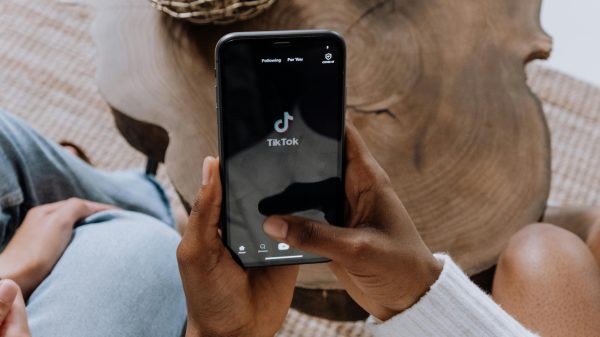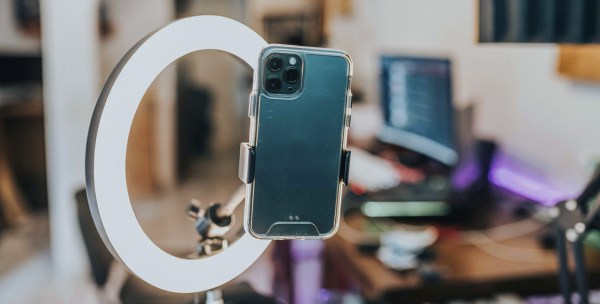Why invest time and dedication in your personal brand?
This professional social network has more than 810 million members in more than 200 countries and territories, half of which are active on a daily basis, and includes senior executives from all Fortune 500 companies.
LinkedIN reports have found that you could get leads 90% faster, reach marketing campaigns with 40% more hits and increase brand reputation by 30%.
By investing in a well-structured and relevant LinkedIn profile, we begin to design a ‘digital alter ego ’ adapted to our professional objective and our networking network.
This strategic upgrade increases our visibility, authority, trust and influence by conveying a unique value proposition. Consistency and authenticity in each publication allows our professional network to grow and strengthen, thus consolidating our online reputation.
In short, developing a personal brand on LinkedIn allows you to:
- Establish a solid and quality network of contacts.
- Increase trust and credibility in your professional area.
- Create strategic connections that boost your reputation.
- Attract job and collaboration opportunities.
My experience
For a long time, my LinkedIn profile remained neutral and professional, without an identity that really set me apart. I only shared ‘safe’ posts and, upon re-reading myself, realised that something more personal was missing. However, since this summer I decided to take a step forward and start building a personal brand that would show more of me. Sharing experiences, interests and what I am passionate about outside of work gives a more complete picture of who I am and what I am about.
I started with some embarrassment, especially at first, but little by little I’ve been opening up. Now I publish at least one post a week on a variety of topics, not always related to work. I use Canva templates to create images that maintain a consistent aesthetic, with a background of the same colour and a coherent editorial line. My posts follow a structure in which I first explore a news story from various sources, give context with data, the relationship to my company and finally provide pros and cons, conclusions and a quote. I also include emojis and lots of air between paragraphs to make the content easy to read.
A good practice I have incorporated is to do a monthly article with the headlines and a summary of the news I have published. This not only gives my posts a second life, but also helps me improve my SEO and Google search rankings. I use artificial intelligence tools to classify topics by category and add direct links, which optimises and adds value to my work.
After my stroke and the experience of living with a disability, LinkedIn has also been a therapeutic tool: it helps me to redefine myself and strengthen my self-esteem. Reading and writing every day not only enriches my knowledge, but also connects me with my network in a genuine way (and, yes, sometimes for recognition… but that’s part of the process, haha!).
How to start building your personal brand
Defining your personal brand on LinkedIn requires a clear vision of who you are and what you want to convey. Here are some key questions to help structure this identity:
- What is your goal, are you looking to be influential in your industry? My goal, for example, is to create impact in the technology field.
- What is your mission on LinkedIn? In my case it is to connect with industry leaders and keep up to date with the latest technology trends.
- What is your long-term vision? I would love to position myself as a benchmark with a community of 5,000 active followers and a reach of 15,000 weekly impressions.
- Who is your target audience? In my case, colleagues in my company, experts, managers of large clients and technology enthusiasts.
- What sets you apart from others? My approach is cross-cutting; I link news, share data and always include a balanced view on the pros and cons of technology.
What makes a LinkedIn profile attractive
From my experience as a LinkedIn coach since 2018 for the sales force, the following elements are crucial to optimise a profile:
- Professional profile picture: Neutral background, adequate lighting, friendly smile.
- Background banner: Use the space to add information about yourself.
- Descriptive title: That reflects your role, skills and how you can help others.
- URL: It is important that you edit it and write your name in order to appear in searches.
- Contact information: Your email address and company link are two useful pieces of information.
- About’ section: Express your essence, with a storytelling you can emphasise the competences developed in your major roles and your added value.
- Highlight: Include samples of your work with multimedia resources.
- Experience and training: Add logos, description, dates and relevant certifications. Having pictures or multimedia that prove your background enriches the profile making it more professional.
- Skills and validations: At least 15 outstanding skills.
- Interests: Follow people and industry groups aligned with your goals to keep up to date with the most important developments.
Strategic networking and quality connections
On LinkedIn, anyone is six connections away from anyone else – the law of six degrees is true. And on LinkedIn, to accept one person into your network is to have an average of 400 more people to reach. Even so, it is better to prioritise and select contacts that bring you closer to your goals and influential people in your sector or industry.
Your LinkedIn network not only reflects your positioning, but also allows you to interact in an environment that supports your reputation and visibility. LinkedIn starts to consider you as having an advanced profile with more than 1000 contacts, but you don’t become a micro influencer until you reach 5000 followers.
You can incorporate the power map of your company, suppliers and customers to complete your networking network. You will be able to follow influencers, even if you are not in their network of contacts, so that you don’t miss their contributions, don’t forget to click on the bell and you will receive notifications.
Interaction is the engine of your network presence
LinkedIn rewards quality over quantity in the publication of content, and some reports recommend between 2 and 3 publications per week. Here are some tips on how to maintain a steady flow of content
- Diversify formats: Use posts, articles, carousels, videos, polls and LinkedIn Live.
- Personalise interaction: Comment on posts from your network, recommend posts and share always adding personal value.
- Take advantage of key moments: According to Metricool 2024 we are recommended to publish at peak times, such as 10:00 am on Wednesday, Thursday and Friday, but this is not fixed, it is best to test and discover the times that work best for you.
- To increase the visibility of your posts, use 1 to 3 hashtags and focus your content on current, authentic topics aligned with your brand.
- Tag people or accounts and sources of information.
- In comments add links or links to topics related to your post.
Find kindred spirits in your networking network
Identifying like-minded people in your network will make your posts much more enriching. When you connect with those who share your interests, comments become deeper and conversations flow, creating a space where you truly ‘speak the same language’. This network of ‘kindred spirits’ can be key to building authentic relationships and maintaining constant, meaningful interaction.
Measure the engagement of your posts
The engagement of your posts is a good measure of their impact. A simple rule of thumb to calculate this is to divide the total number of interactions (recommendations, views, comments, etc.) by the number of followers, and multiply the result by 100. Ideally, keep this percentage around 2% to reflect an active and engaged community.
Measuring your success is measuring your SSI (Social Selling Index)
- The Social Selling Index (SSI) is a key metric that evaluates your activity on LinkedIn.
- It measures impact in four areas, each with a 25% weighting:
- Establish your professional brand: Complete profile and valuable posts.
- Find the right people: Finding the right contacts.
- Interact in valuable ways: Create and engage in meaningful conversations.
- Strengthen relationships: Connect with experts and leaders in your industry.
A high SSI positions you as a reference, generating up to 45% more opportunities and a 78% increase in sales, according to LinkedIn. To have an advanced profile you must have an SSI over 50 . What is yours?
Conclusion
Cultivate a brand that speaks for you. The effort is greater at the beginning, then you create habits to be present and it will become easier. It is worth it, remember, people look at your LinkedIN before having a meeting with you. And above all, ‘Caesar’s wife must appear to be Caesar’s wife’ and LinkedIN is a professional showcase.











